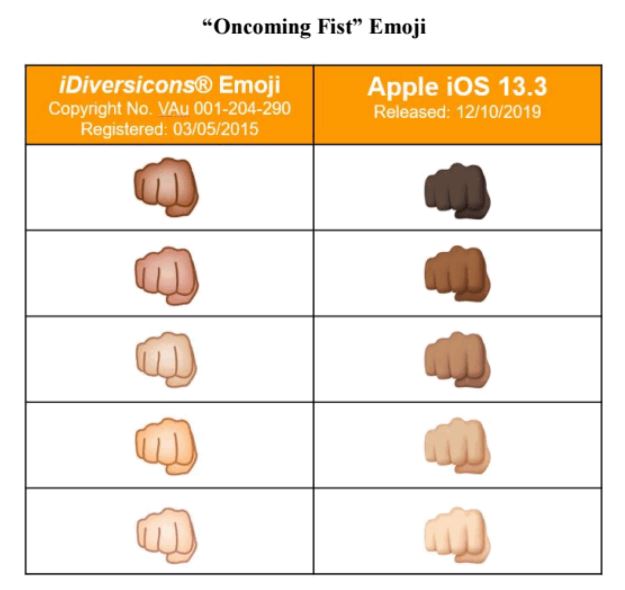Depiction of Michigan as Hands Doesn’t Preclude Similar Depictions–High Five v. MFB
High Five Threads sells t-shirts and tchotchkes. It claims copyright and trademark protection for a depiction of upper and lower Michigan as two hands (left-most image below). People routinely depict lower Michigan as a hand, and apparently others envision the two peninsulas as giving each other a “high five” (which inspired the plaintiff’s name). The defendant depicted Michigan with a similar two-hand graphic (see right-most photo below).
Copyright. The court says High Five’s depiction has thin copyright protection:
The allegedly infringing works at issue here contain a basic line drawing of two hands. High Five does not possess copyright protection over a simple outline of a human hand. There is nothing original in such a drawing; it is the most basic representation of something from nature, familiar to every child who has ever traced her own hand. Does the juxtaposition of two such drawings at a right angle, as in the Hand Map, result in copyright-protectible expression? If it does, the protection for that expression is “thin” at best, “comprising no more than . . . original contribution to ideas already in the public domain.” Two close-fingered hands arranged perpendicular to one another as a representation of Michigan is simply a generic expression of the “popular idea of using ones’ hands to indicate the shape of Michigan.” High Five did not invent this idea and copyright does not protect it.
To be sure, High Five’s Hand Map is not devoid of protected expression. For instance, the folded pinky and overlapping index finger are arguably protected elements. But those elements are not present in MFB’s design; thus, MFB did not copy them. Moreover, to the extent High Five possesses “thin” copyright protection over the outline of two hands in the hand map configuration, High Five does not state a claim because it must show “virtually identical copying” of its protected rights. The differences between the Hand Map and MFB’s designs—including the different colors used by MFB, the unique shape and positioning of the thumbs and fingers in High Five’s design, and the shorter fingers in MFB’s design—show that any copying was not virtually identical.
In a footnote, the court highlights another minor difference: “the thumb of the lower hand on High Five’s Hand Map is more prominent than the one in MFB’s design, more faithfully depicting Saginaw Bay and the thumb region of the lower peninsula.”
The court makes clear that the distinctive elements of High Five’s depiction that helped clear the copyrightability threshold, like the bent pinky, work against it when determining infringement. The court is exacting when reviewing the images. For example, until the court pointed it out, I didn’t notice that the upper hand’s index finger overlapped. Normally, copyright’s ordinary observer test doesn’t permit such exactitude. As Judge Hand said in Peter Pan, works are substantially similar when an ordinary reasonable person, “unless he set out to detect the disparities, would be disposed to overlook them, and regard their aesthetic appeal to be the same.” Here, the judge doesn’t give a thinly copyrighted work this benefit of the doubt.
This ruling has some implications for emoji copyrights. First, it suggests that many Unicode’s outlines are not copyrightable at all because they are “the most basic representation of something from nature.” Second, it suggests that any emoji depiction that qualifies for copyright protection will preclude only virtually identical depictions. Thus, even minor variations in individual platforms’ emoji depictions–such as finger overlaps or deeper gaps between thumbs–should negate infringement. (However, as I have lamented, this incentive to create unnecessary minor variations exacerbates user misunderstandings). With respect to the pending emoji copyright suit in Cub Club v. Apple, the plaintiff claims infringement in body part depictions like fists even though Apple’s fist outlines are slightly different, such as the bigger thumb, fatter pinky, and peakier knuckles (plus the colors are quite different). I think the Michigan ruling indicates that Apple’s differences should defeat copyright infringement.
Trademark. The court says that High Five’s outline is distinctive, but the other LOCC factors weigh against it. For example, with respect to product relatedness, the plaintiff sells tchotchkes, the defendant sells insurance. Regarding similarity, the court says: “The elements that are unique in the Hand Map, particularly the folded pinky and overlapping index finger, convey a distinct impression that differentiates it from MFB’s drawing of two outstretched hands near one another.” Trademark’s “substantial similarity” standard normally cares even less about immaterial differences than copyright’s, but the court treats the legal standards as roughly the same.
For these reasons, the court granted the defendant’s motion to dismiss.
Case citation: High Five Threads v. Michigan Farm Bureau, 1:20-cv-00604-HYJ-SJB (W.D. Mich. May 6, 2021).


